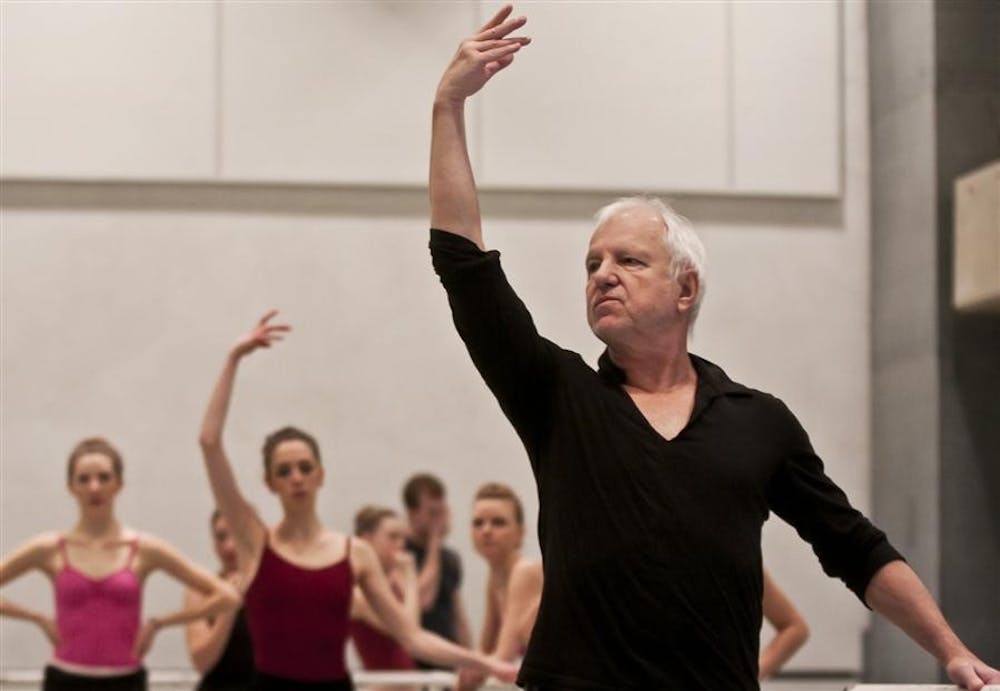Natalie Portman was pushed to her breaking point in “Black Swan” because of her obsession with becoming the perfect ballerina. In the movie “Center Stage,” a dancer was fired from the ballet company because she gained too much weight.
These movies tell dramatic stories of what it’s like to be a professional dancer, but a ballerina from Milan’s La Scala Ballet Company recently revealed that these dramatizations are not too far from reality.
One in five ballerinas at La Scala has an eating disorder, company member Mariafrancesca Garritano said in her interview with the Observer. Garritano was fired from La Scala as a result of the remark.
It is no secret that a long, lean figure is preferred in ballet, but the vulnerability to eating disorders and the health risks associated with ballet is something most dancers would prefer to sweep under the rug.
“There is so much pressure to be thin in the ballet world, but the health issues often go unspoken,” said Sami Nagy-Chow, a sophomore ballet major in the Jacobs School of Music.
Behind the elegant tutus and whirling pirouettes, the mental and physical demands dancers deal with to fit the ballerina mold reveal a less graceful side of ballet.
IU’s Ballet Department in the Jacobs School of Music is no exception to this kind of pressure and vulnerability to health issues.
“Ballet is a physical art form,” Jacobs Ballet Chair Michael Vernon said. “Girls need to be lifted. Ballet requires a certain look, like modeling.”
Junior ballet major Jacob Taylor said keeping a healthy balance is key to dealing with the mental and physical stresses of ballet.
“You can’t do too much of something,” Taylor said. “Our body is our instrument, and we need to keep that instrument healthy.”
Alyssa McPherson, an athletic trainer for the ballet program, said this is what the program promotes.
“It has always had the philosophy that a dancer’s body is their instrument for performance and therefore has to be properly maintained,” McPherson said.
Ballet majors have rigorous schedules of academic classes, technique classes and rehearsals, but Nagy-Chow said “the majority of the dancers are healthy.”
“I have seen a lot more issues with weight and health elsewhere, but they still exist here,” Nagy-Chow said. “We all have a bit of ballerina-itis.”
Vernon said that, in his five and a half years as the department chair, he has worked to create a healthy environment.
“I think that by creating an environment that is nurturing, we’ve taken a lot of the negativity and competition out of the department,” Vernon said.
He has also made available a nutritionist from the IU Health Center and an athletic trainer from the School of Health, Physical Education and Recreation. The nutritionist gives a lecture to the dancers at the beginning of each semester, but Vernon said the department did not give one this semester because they were so busy.
The ballet majors mainly rely on each other for support and maintain a family-like community to deal with the pressures.
Nagy-Chow remembered helping a fellow ballerina in the department who was told to lose weight and began turning to unhealthy methods.
“It was really scary to see her start to do that,” Nagy-Chow said. “My friends and I supported her and stopped her from going down a long road of anorexia. You need friends’ support to push against the pressure.”
The University’s campus and environment also work to keep dancers grounded. Nagy-Chow said that academics and the social scene remind them that “ballet isn’t the entire world.”
For some individuals, though, ballet is their entire world.
“Some of the ballerinas, like any type of artist, are so passionate that they will do anything to achieve their goals,” Nagy-Chow said. “If that means using unhealthy ways to stay thin, they’ll do it.”
Vernon said he estimated that 99 percent of the students are healthy.
Nagy-Chow said she identified three cases that currently need attention.
“The problem is teachers will tell dancers they need to lose or gain weight, but the teacher doesn’t always tell dancers how to do it properly,” Nagy-Chow said. “So they will often turn to unhealthy ways to get quick results, but this can turn into a lifelong condition.”
Nagy-Chow said this is a current issue at IU Ballet Theater. She said directors will address certain cases of eating disorders, but there is no follow-through.
“It’s like they will talk about it and then just forget,” Nagy-Chow said. “I think the health of the dancers should be number one.”
Vernon said he and McPherson monitor the students who need attention, but he believes it is ultimately the dancer’s responsibility to take care of his or herself.
“At 18, the students come here at a professional level,” Vernon said. “They should know how to make an effort to meet us halfway. We can’t teach them everything.”
Taylor agrees that nutrition and health should be a more focused topic in the program.
“Health isn’t promoted in the Ballet Department as much as it should be,” Taylor said. “The department’s weak spot is health.”
Taylor recalled having two nutrition lectures throughout his three years at IU.
“I don’t even know what the nutritionist’s name is,” Taylor said. “I remember having a nutrition lecture my sophomore year. Attendance wasn’t taken and only half of the majors showed up.”
Taylor and Nagy-Chow both advocated for more education through consistent nutrition lectures and required personal health classes.
“We simply can’t eat a 2,000 calorie diet,” Nagy-Chow said. “Dancers need to know how to fuel their bodies the right way.”
Vernon said there has been a lack of communication on the topic of health.
“I’d think that if students were seeing an issue they would knock on my door and say, ‘Hey Michael. We need a nutrition class,’” Vernon said.
McPherson has also noticed a lack of health education among the dancers.
“They are typically meticulous in what they do to take care of themselves, for the most part — if they know what to do,” McPherson said. “The question, however, is they often do not know who to see for a particular problem and what type of care will help them heal. They have spent thousands of hours learning technique but often have little knowledge about the physiology of their body and who are the appropriate health care specialists to assist them.”
Nagy-Chow and Taylor both expressed irritation because they’ve seen so many fellow male and female dancers struggle with their weights and body images throughout their dance careers.
“IU Ballet Theater really is an amazing program and I love it, but this is what we need help with,” Taylor said.
Nagy-Chow has proven that a healthy body and a successful ballet career can be maintained. She had lead roles in both of IU Ballet Theater’s productions this year and potentially will perform the part of Aurora in the upcoming performance of “Sleeping Beauty.”
“I am one of the meatier girls in the department,” Nagy-Chow said. “But I’m a good dancer because I am strong and take care of myself. Other dancers who don’t fuel their bodies will be injured, and their careers will be dying by 23.”
Ballerina-itis: The pressure to be thin

Get stories like this in your inbox
Subscribe





